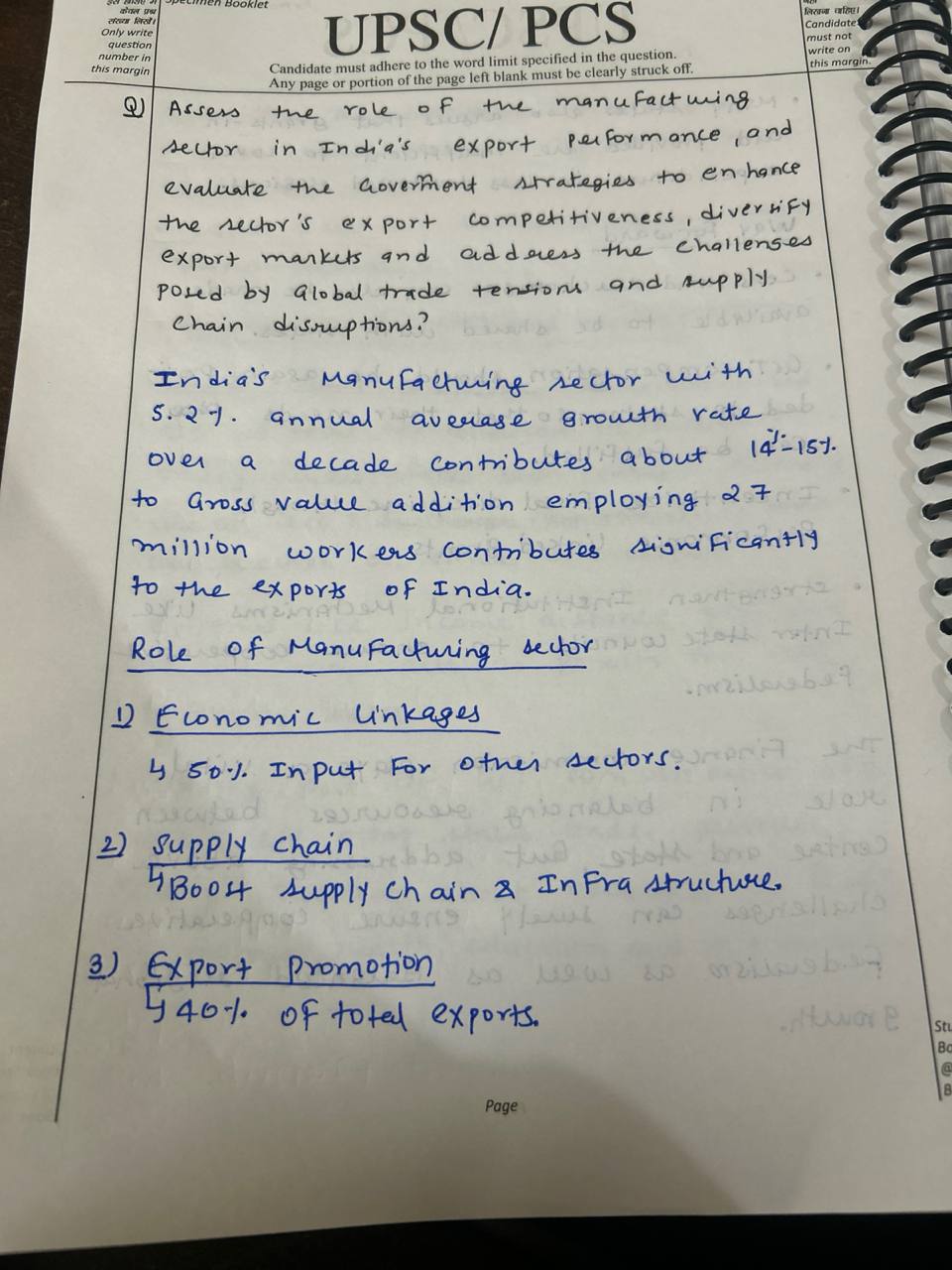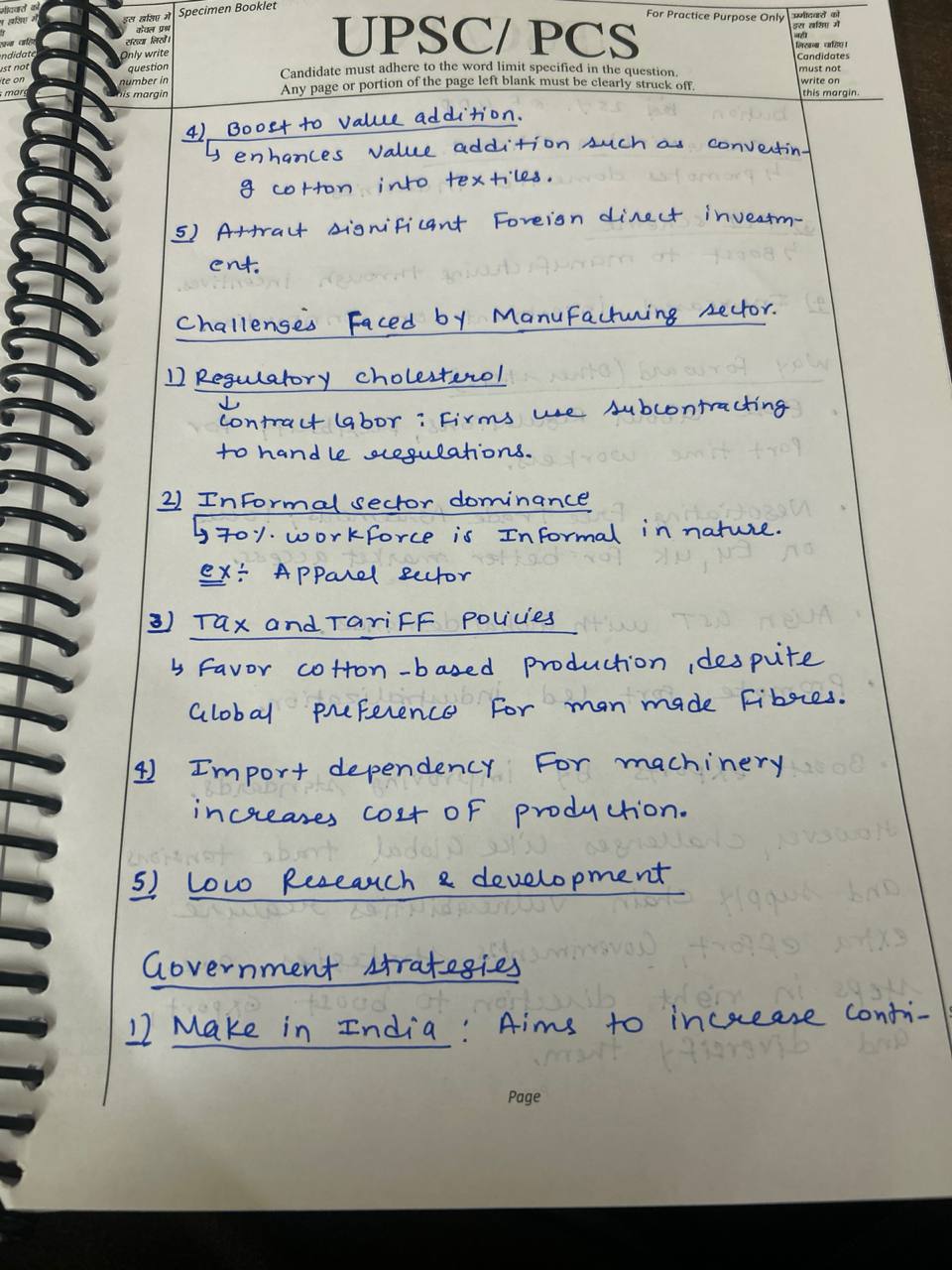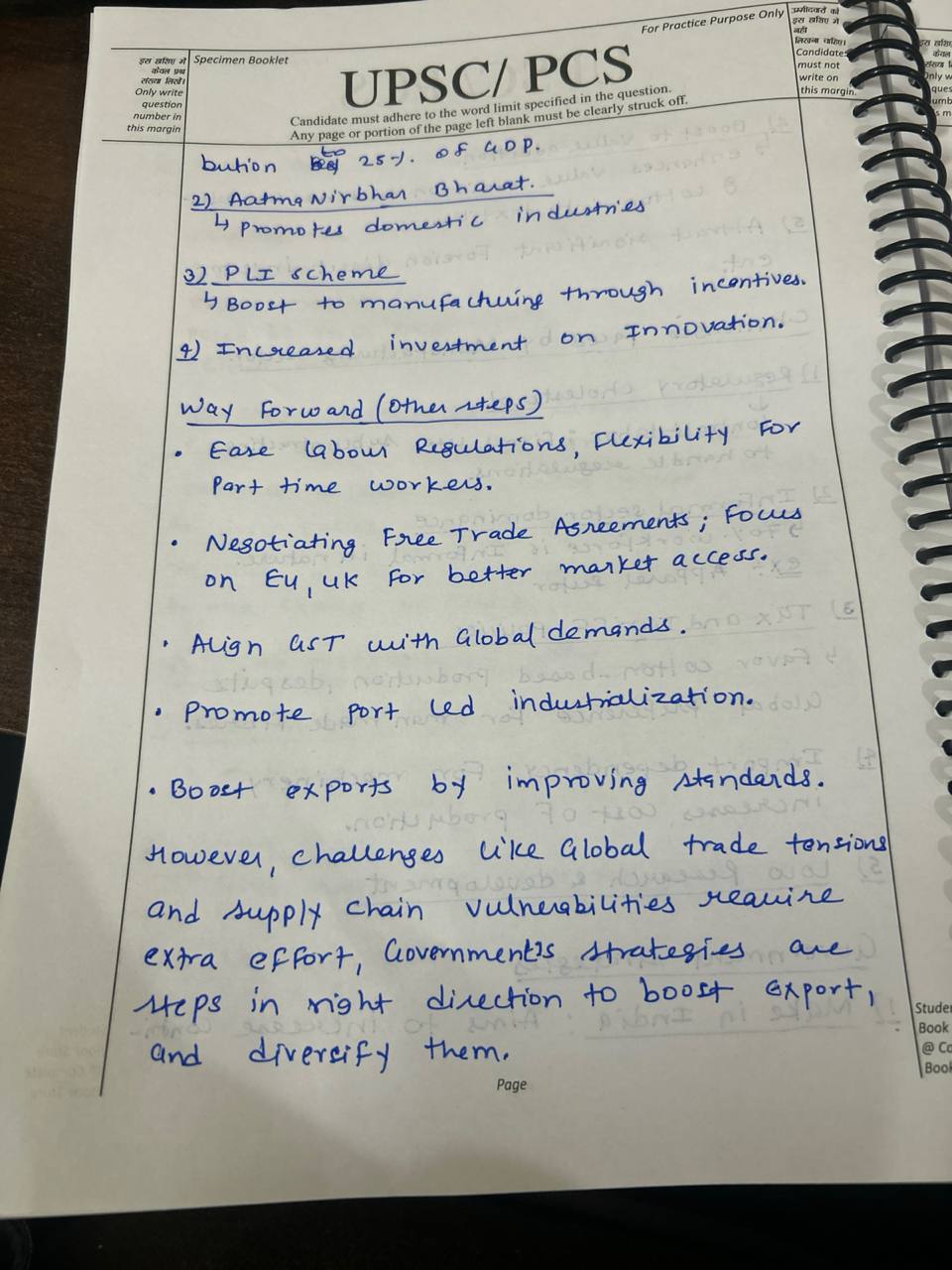Roadmap for Answer Writing 1. Introduction: Briefly introduce the Production Linked Incentive (PLI) scheme and its role in strengthening India’s manufacturing sector. Mention the long-standing nature of India’s industrial policy, with the last major update in 1991. Pose the central question: whether a new ...
Model Answer India's growing working-age population, expected to increase by about 9.7 million annually from 2021 to 2031, presents both an opportunity and a challenge. Labour-intensive manufacturing could help create jobs, but several barriers hinder this strategy. 1. Capital-Intensive Focus in ManRead more
Model Answer
India’s growing working-age population, expected to increase by about 9.7 million annually from 2021 to 2031, presents both an opportunity and a challenge. Labour-intensive manufacturing could help create jobs, but several barriers hinder this strategy.
1. Capital-Intensive Focus in Manufacturing
India’s manufacturing sector has been more capital-intensive than labour-intensive. The workforce in manufacturing shrank from 51 million in 2017 to 27.3 million in 2021, as industries focus more on automation and capital-heavy production processesmits the potential for job creation in sectors that traditionally employ large numbers of workers.
2. Policy Gaps and Lack of Support for MSMEs
While initiatives like Make in India and Production-Linked Incentive (PLI) schemes primarily target capital-intensive industries, the bulk of employment in manufacturing lies in MSMEs (Micro, Small, and Medium Enterprises). However, MSMEs struggle with inadequate banking, financial, and infrastructure support . There for policies that provide tailored support to MSMEs, especially in labour-intensive sectors like textiles, food processing, and footwear.
3. Structural Bottlenecks
India’s complex labour laws, restrictive land acquisition regulations, and high logistics costs (14% of GDP compared to under 10% in developed nations) further complicate the path to scaling labour-intensive manufacturing . These barriersnt and make manufacturing less competitive.
4. Competition from Emerging Markets
Countries like Bangladesh and Vietnam, which have benefited from lower production costs and better market access, are increasingly competing with India in global markets for labour-intensive products . India must address this rising coto retain its market share.
5. Unskilled Workforce and Technology Upgradation
A lack of formal skills training—only 21.2% of India’s workforce had such training in 2019 —limits productivity in labour-intensive secover, sectors like textiles have increasingly adopted automation, reducing the need for manual labour and hindering job creation.
To tackle these challenges, India must focus on supporting MSMEs, improving infrastructure, and upskilling its workforce, creating a more favorable environment for labour-intensive manufacturing to thrive.
See less



Model Answer Introduction The Production Linked Incentive (PLI) scheme has been a game-changer in strengthening India's manufacturing sector, attracting both domestic and foreign investments. However, despite its success, the need for a comprehensive industrial policy remains critical to ensure sustRead more
Model Answer
Introduction
The Production Linked Incentive (PLI) scheme has been a game-changer in strengthening India’s manufacturing sector, attracting both domestic and foreign investments. However, despite its success, the need for a comprehensive industrial policy remains critical to ensure sustained and inclusive industrial growth. Below is an assessment of the role of the PLI scheme and the necessity for a new industrial policy.
Role of the PLI Scheme
Example: Electronics, automobiles, and textiles are all major sectors benefitting from the PLI scheme.
Need for a New Industrial Policy
While the PLI scheme has delivered impressive results, a new industrial policy is crucial to address broader and long-term challenges:
Conclusion
While the PLI scheme is an important tool for boosting India’s manufacturing sector, a new industrial policy is essential to provide a broader, more inclusive, and sustainable framework for industrial development. Instead of replacing the PLI, the new policy can complement it, focusing on long-term strategic goals and addressing areas that the PLI does not cover.
See less